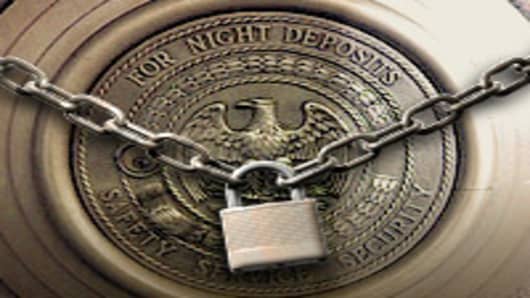When I was a banking lawyer, we usually referred to this as “cost plus lending.” The idea was that the bank’s source of profit was charging more for loans than it cost the bank to make the loan.
This sounds pretty simple until you start thinking about the source of the costs to make a loan. The first cost, of course, is what’s known as “the cost of funding”—the amount the bank must pay to borrow the reserves required to make loans.
But there are a host of non-funding costs as well. The bank must also somehow acquire the regulatory capital to back the loan, and capital can be expensive. The bank faces administrative costs in making the loan. Bankers must be paid. There may also be various taxes and government fees that apply.
Banks also face interest rate risk that they attempt to hedge by either borrowing funds at durations that match the term of the loan they are making—which raises the bank’s cost of funding—or making floating rate loans. But with very large loans, banks will often require floating rate borrowers to hedge against interest rate risk themselves—since you don’t want your borrower defaulting just because rates have increased. The price of interest rate hedging also has to be figured into the borrowers ability to pay the loan.
These aren’t trivial costs. The best estimate is that these add up to almost 300 basis points—the spread between the Fed Funds rate and the Prime Rate.
This means that even if banks can make loans out of thin air, there are plenty of loans that a bank cannot make. Or, to put it differently, if a bank makes too many of these loans it will lose money and eventually fail. A person or business whose free cash flow is too light to support the costs of the loan, for example, is not credit worthy—that is, not eligible to receive a loan under most circumstances.
This is one way that monetary policy works to encourage more lending. When monetary policy brings down the price of banks borrowing reserves—that is, reduces the Feds Funds rate—it brings down the cost of making loans. This means some borrowers will be credit worthy at lower rates that wouldn’t make the cut at higher rates.
The flip side of this is that potential borrowers must also see opportunities to put bank loans to work. If they view potential for future profit as weak, the demand for new loans shrinks. Of course, monetary policy plays a role here too. Low rates can make otherwise uneconomic projects work and, as the Austrians put it, may send a signal that there is more saving in the economy available for future spending. (Although, I would add, that under our current system of Fed manipulated interest rates and endogenous money creation by banks, this is almost certain to be a false signal.)
Banks also must price in the “credit risk” of making a loan—the risk that the borrowers may default, either because the collateral for the loan becomes so undervalued that the borrower “walks away” or because cash flow fall short of what is needed to make the loan.
Credit risk depends both on the individual character of each borrower and the general economic prospects. Rising unemployment, fall in consumer demand, the plausibility of management’s business plans all feed into credit risk.
Evidence indicates that credit risk, interest rate risk and other costs of lending exercise very strong influences over lending. The stuff the Fed tends to influence most directly—the cost of funding—can be overwhelmed by the credit risk and cost of capital.
As Christina and David Romer showed in this 1994 paper, banks have shown that they can maintain high lending levels even when policy is tightening. And, as we’ve seen recently, banks can maintain low lending levels (relative to reserves) even when policy is loosening.
To put it differently, banks are not free to create money willy-nilly. They are subject to restraints imposed by both the markets and regulators. But under current procedures, these restraints do not arise from a hard limit on the amount of reserves in the system. They arise from the costs of lending, which is conditioned by (a) the interest rate targeted by the Fed, (b) regulatory and market capital requirements and the market price for bank capital, (c) by back-office administrative and hedging costs of lending, and (d) the credit-worthiness and credit-hungriness of borrowers.
Follow John on Twitter. (Market and financial news, adventures in New York City, plus whatever is on his mind.) You can email him at john.carney@nbcuni.com.
We also have two NetNet Twitter feeds. Follow CNBCnetnet for the best of the days posts, including breaking news. Follow NetNetDigest for a feed of every single post each day.
You can also be our friend on Facebook. Or subscribe to John's Facebook page.
We're on Google Plus too! Click here and add NetNet to your circles. And here is John's Google+ page.
Questions? Comments? Tips? Email us atNetNet@cnbc.comor send a text message to: 9170740-8477.
Call us at 201-735-4638.



